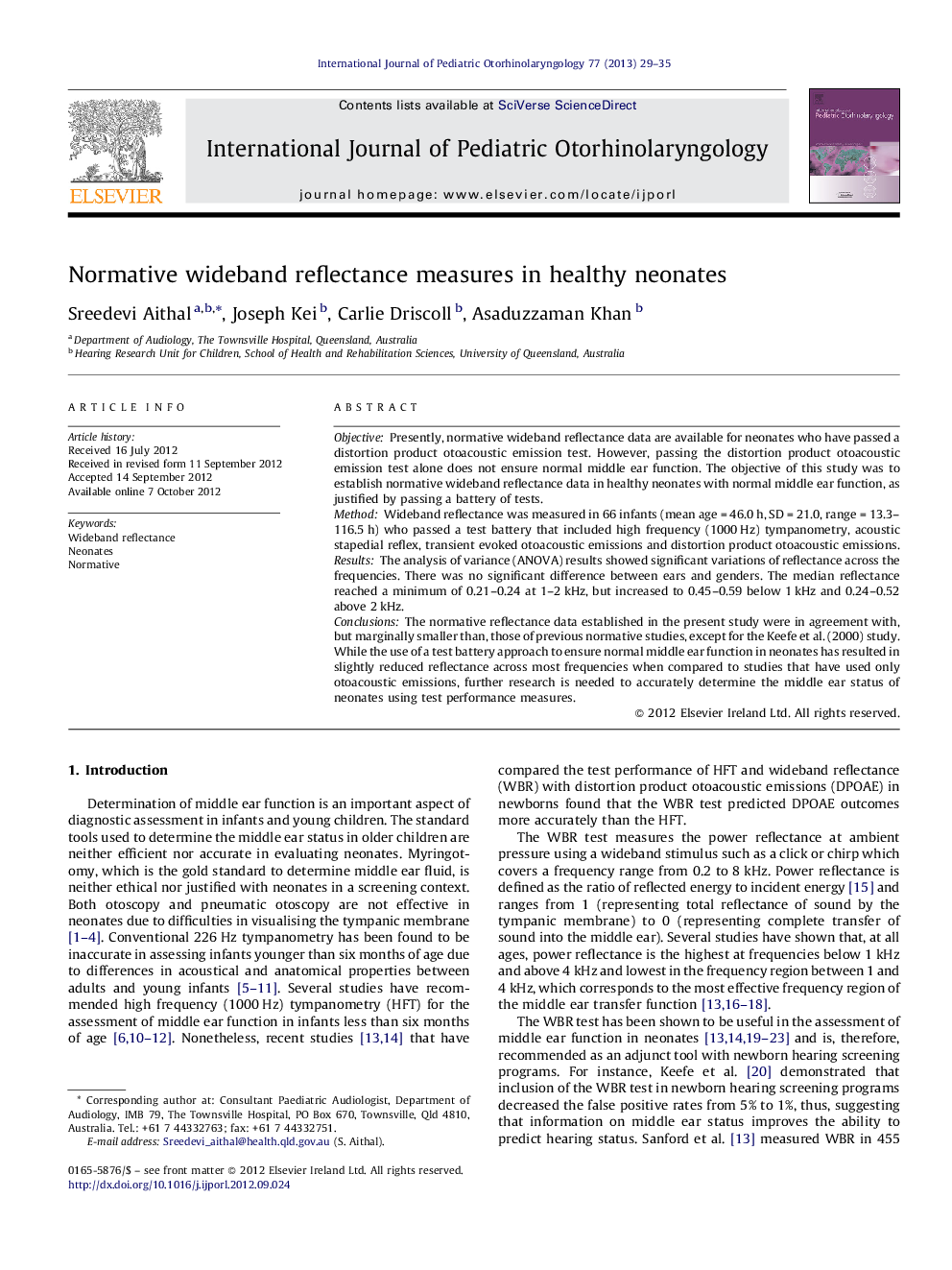| Article ID | Journal | Published Year | Pages | File Type |
|---|---|---|---|---|
| 6213987 | International Journal of Pediatric Otorhinolaryngology | 2013 | 7 Pages |
ObjectivePresently, normative wideband reflectance data are available for neonates who have passed a distortion product otoacoustic emission test. However, passing the distortion product otoacoustic emission test alone does not ensure normal middle ear function. The objective of this study was to establish normative wideband reflectance data in healthy neonates with normal middle ear function, as justified by passing a battery of tests.MethodWideband reflectance was measured in 66 infants (mean age = 46.0 h, SD = 21.0, range = 13.3-116.5 h) who passed a test battery that included high frequency (1000 Hz) tympanometry, acoustic stapedial reflex, transient evoked otoacoustic emissions and distortion product otoacoustic emissions.ResultsThe analysis of variance (ANOVA) results showed significant variations of reflectance across the frequencies. There was no significant difference between ears and genders. The median reflectance reached a minimum of 0.21-0.24 at 1-2 kHz, but increased to 0.45-0.59 below 1 kHz and 0.24-0.52 above 2 kHz.ConclusionsThe normative reflectance data established in the present study were in agreement with, but marginally smaller than, those of previous normative studies, except for the Keefe et al. (2000) study. While the use of a test battery approach to ensure normal middle ear function in neonates has resulted in slightly reduced reflectance across most frequencies when compared to studies that have used only otoacoustic emissions, further research is needed to accurately determine the middle ear status of neonates using test performance measures.
